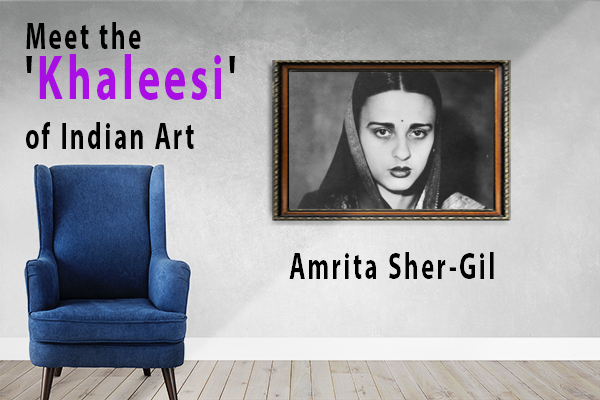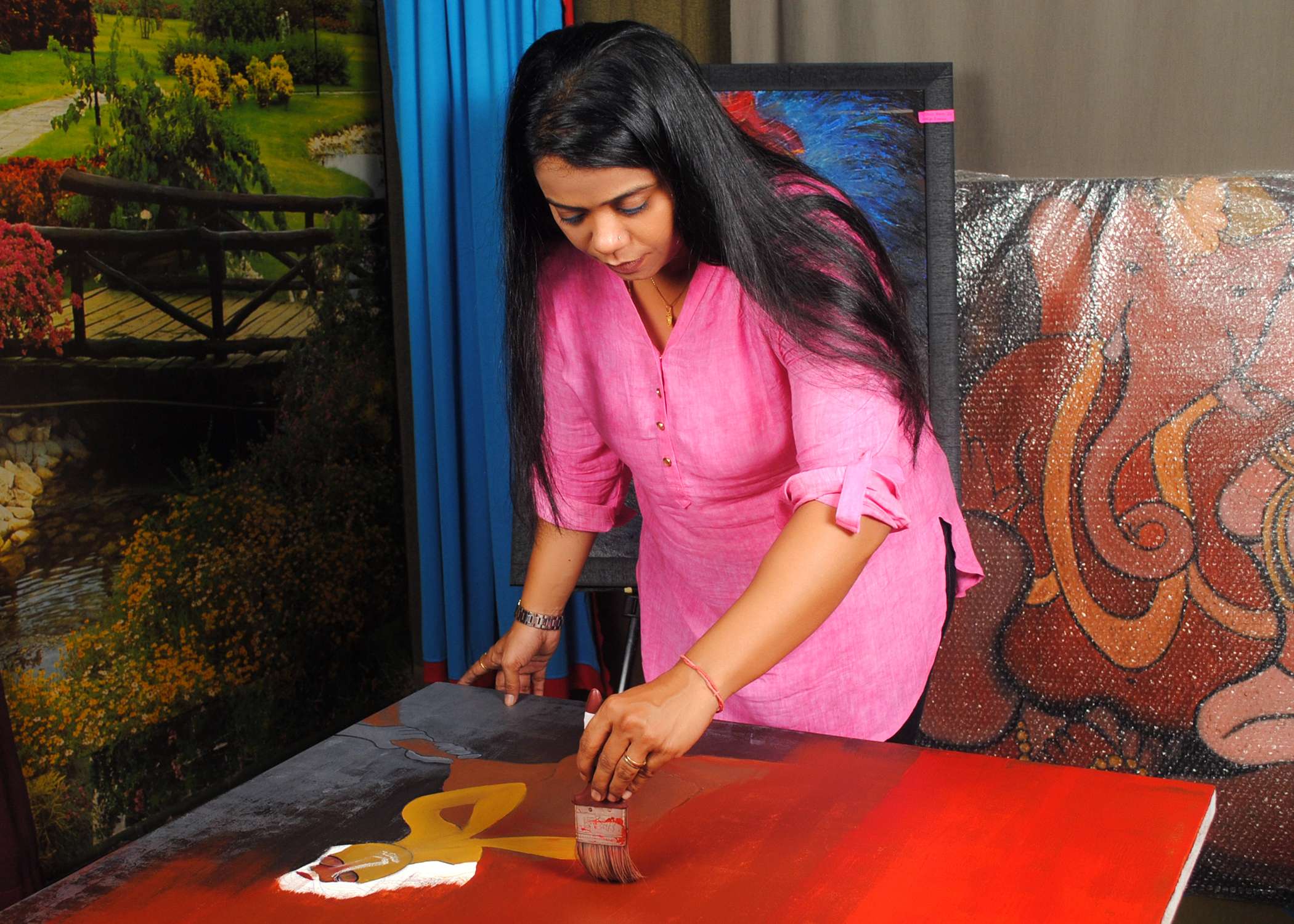
Indian Paintings always captivate the interest of art zealots spread across the world.
Art plays an unwonted but a razzle-dazzle way to supersede dominant notions. For centuries, different artists, in their quest to expand their imagination and creativity looks for inspiration in the hard-shelled conventions of our society.
Some become successful while others just fade away.
However, when we are talking about renowned artists of India that have made our country proud with their talent and thought level, we cannot ignore the name of Amrita Sher-Gil.
Perhaps the only Indian and Asian woman who has been able to make a phenomenal name for herself on a global level in the 20th century.
We are talking about the time when women weren’t given equal respect and stature in India and most part of the world.
At that time, Amrita Sher-Gil got the title of ‘Frida Kahlo of India’. Given the illustrious stature of Kahlo, it won’t be baffling to think what the repute of Amrita was.
She is the only Indian woman famous painters of India whose work comes under the list of most expensive paintings sold by Indian artists.
Before we begin to cheer more of her, let’s take a quick look at the early life of Sher-Gil and see what made this lady an epic artist.
Where it begins – Amrita’s early life
In the year 1913, a Punjabi Father and a Hungarian mother were blessed with a baby girl as Amrita took birth in Budapest, Hungary.
She spent most of her toddler days there until 1921 when she moved to India along with her parents and settled in Shimla.
At a mere tender age of 8, Amrita started painting. Within 3 years, Amrita was sent to Italy to get a complete formal education in art. However, being a rebel, Amrita returned to India soon.
Being a non-believer and the person who rejects Catholic conventions straightaway, Sher-Gil was terminated from a convent school in India.
During this period, Amrita spends most of her time playing the piano, learning and most importantly painting. Amrita, apart from being a prodigious painter, was also a terrific piano player and a writer too.
For her, the ability to paint was not a new skill that she learned. According to Amrita, painting always came to her as an inevitableness and a pre-destined talent.
In the year 1929, with the help of her uncle, Ervin Bakatay, Amrita got admission at Academia de la Grande Chaumiere Institute, one of the finest art schools in Paris.
There too, Amrita never cared to follow the academic convention of the institution; instead, she followed her own style – the one that came out of her heart directly.
Like a bird is not meant to be caged, in the similar fashion Amrita’s inner talent and her craving to paint made her leave the institution and join another illustrious art school named Ecole Nationale des Beaux-Art.
It was there that Amrita developed an interest in developing the human form and model painting. Amrita’s favorite tools to create ecstatic male and female nudes were pencil and charcoal.
Amrita successfully developed around 60 exquisite paintings that comprised of landscapes and still-life motifs along with portraits and self-portraits that were crafted in oil paints.
She produced some of the remarkable Indian paintings of the 20th century.
During her tenure in Paris, Amrita was able to conduct several exhibitions where her work was applauded.
Post her return to India, Amrita being an independent woman, decided to marry her childhood pal and first cousin Victor Egan in 1938.
The marriage happened despite the disagreement of Amrita’s mother.
Journey to the future – Foreseeing the Indian Contemporary Art
Amrita was flamboyant professionally.
She was outspoken and extremely bold women considering her insurgent nature.
As per Amrita, “Europe belongs to Picasso, Matisse, and several such artists. India belongs only to me”.
She came back to India in 1935 following her artistic voice. Interestingly, she always believed that there is something big waiting for her artistic self in India.
Her first encounter with the caves of Ajanta & Ellora transformed her vision and perception of art at many levels.
What intrigues most of the art curators, experts, and scholars was the reluctance of Amrita to paint her own self repetitively in diverse patterns, apparels, emotions, and expressions.
While doing so Amrita boldly utilized both European and Indian painting styles.
The kind of Indian paintings she drew was mostly inspired by the horrendous treatment of women.
Amrita’s work was ahead of the time she was painting them. Mostly inspired by legends like Paul Cezanne and Paul Gauguin, Amrita mainly focused to show the hidden or oppressed emotions of Indian women.
She always advocated for Indian women and want them to be self-dependent and strong.
Some of her most applauded paintings are “Portrait of a Young Man”, “Marie Louise”, and “Young Girls”. All of these paintings she created in Paris.
Out of these, “Portraits of a Young Man” won a prize at Ecole in 1931 and “Young Girls” won the Gold Medal from the Grand Salon in 1933.
She became the first and only Asian female artist to win such an honor.
Coming back to India, Amrita coursed for a totally different odyssey altogether. With her works like “Beggar Woman” and “Portrait of a Father”, it was clear that the style and thought process of Amrita transformed to a completely new level.
Amrita Sher-Gil – devising captivating Indian paintings
Amrita was tagged as “Frida Kahlo of India” for her unique and strong image.
During her return to India in 1935, Amrita went on a tour of India to capture the reality of Indian women in the rawest form.
No doubt, Amrita always believed that she is living in a male-dominated society, whether in Paris or India.
She struggled a bit in Paris but as soon as she came to India, she had a complete makeover vis-à-vis her comprehension of art.
Finally, in 1936, the Indian press begins to notice the Amrita’s work – a long due recognition.
At the 5th Annual Exhibition of the All India Fine Arts Society in New Delhi, Amrita bagged two prizes and in the same year, she held an exhibition of her most popular works in Bombay.
India gave Amrita what she was always craving for – her true self – a painter that was hidden inside.
People and professors associated with Amrita also told that the true essence and charm of her colors can be seen only in the Indian paintings.
Her death was a mystery. She died at a young age of 28, which is assumed to the second abortion she had undergone. Amrita’s mother said that Victor killed her.
It was a tragic end to a beautiful tale of a strong woman who not just was an excellent writer, a melancholic piano player, and a gifted painter, but also an epitome of strength and determination.
While people get inspired by the character of Emilia Clarke’s character in HBO’s favorite Game of Thrones season, Amrita Sher-Gil was the true Khaleesi of Indian contemporary art.
We will surely miss her. Thanks.





















